On Saturday, my mother, several friends/co-workers and I all participated in the Susan G. Komen Foundation “Race-for-the-Cure”. The Foundation is dedicated to raising money for breast cancer research and education; this race is one of their big events. This was our fourth year doing the race (in the “noncompetitive walk” category). The race was especially important this year as our little group had been affected by breast cancer more directly than previous years.
I dilly-dallied on this post because I ended up taking a crazy amount of photos at the race. After some consideration, I’ve decided to split the photos into two posts. The first post will be about the race itself, the second will focus on downtown San Antonio’s buildings.
Teaser: My sole architectural picture for this post:
The Alamodome before sunrise on Saturday.
One of the best things about participating in the “Race-for-the-Cure” is the various groups who join in. Our first encounter of the day was with “Kilts for the Cure”:
Lovely people who after humoring my request for a picture gave us coupons for the upcoming “Highland Games” held out in Helotes.
After meeting up with our group (can I just say, how did people get together in situations like this before cell phones?), we made our way to the “Survivors Café” for the pre-race activities. While it’s good there are so many survivors of this disease, seeing the number of women affected is quite moving:
The hardest part about the race is dealing with the huge crowd around the start line.
The best part about the starting line is that local newscasters read off people’s signs and teamnames as they pass by the start line. Best teamname of the day: “The Methodist Line-Dancers”. Who knew?
Some teams put together really elaborate signs to express their support. One of the best we saw for this race was from an elementary school’s team (I think): It’s even more impressive when you realize everyone not carrying a letter was banging away with tambourines.
It’s even more impressive when you realize everyone not carrying a letter was banging away with tambourines.
Many residents of downtown San Antonio were out in their yards and balconies cheering on the race participants, but I have to give special recognition to these two old ladies: They had flags, ribbons and a bubble machine (!).
They had flags, ribbons and a bubble machine (!).
In addition to residents, various entertainers are typically set-up along the race route to offer musical accompaniment to the participants. The first is also a long-time favorite: Brazilian Hula Dance Troupe! These ladies (and occasionally guys) have been there every year of the race and they do a great job of getting everybody revved up.
Brazilian Hula Dance Troupe! These ladies (and occasionally guys) have been there every year of the race and they do a great job of getting everybody revved up.
Thankfully, the race route has few hills but unfortunately, there’s a bridge shortly after the start that we cross over. Fortunately, the bridge offers a chance to get great pictures of the crowd. Here’s ahead of us from the top of the bridge
Another favorite band has also participated every year we’ve done the race. They are always on the corner next to the Alamo. I give you San Antonio cultural tradition numero uno: The Mariachi Band! These guys are always good; many people sit in the Alamo park area and listen before continuing on with the walk. It’s also hard to get a picture because they are surrounded. This year was my third (and only successful) try to get a decent photo.
The Mariachi Band! These guys are always good; many people sit in the Alamo park area and listen before continuing on with the walk. It’s also hard to get a picture because they are surrounded. This year was my third (and only successful) try to get a decent photo.
Now towards the end of the route, the musicians can be hit-or-miss. Last year, we had this fantastic hip-hop gospel dance troupe *digs around frantically on hard drive for picture* Damn....
So, this year we weren’t sure what bands would be out. Firstly, there was a fantastic blues duo (seriously the lead singer/guitarist was awesome!):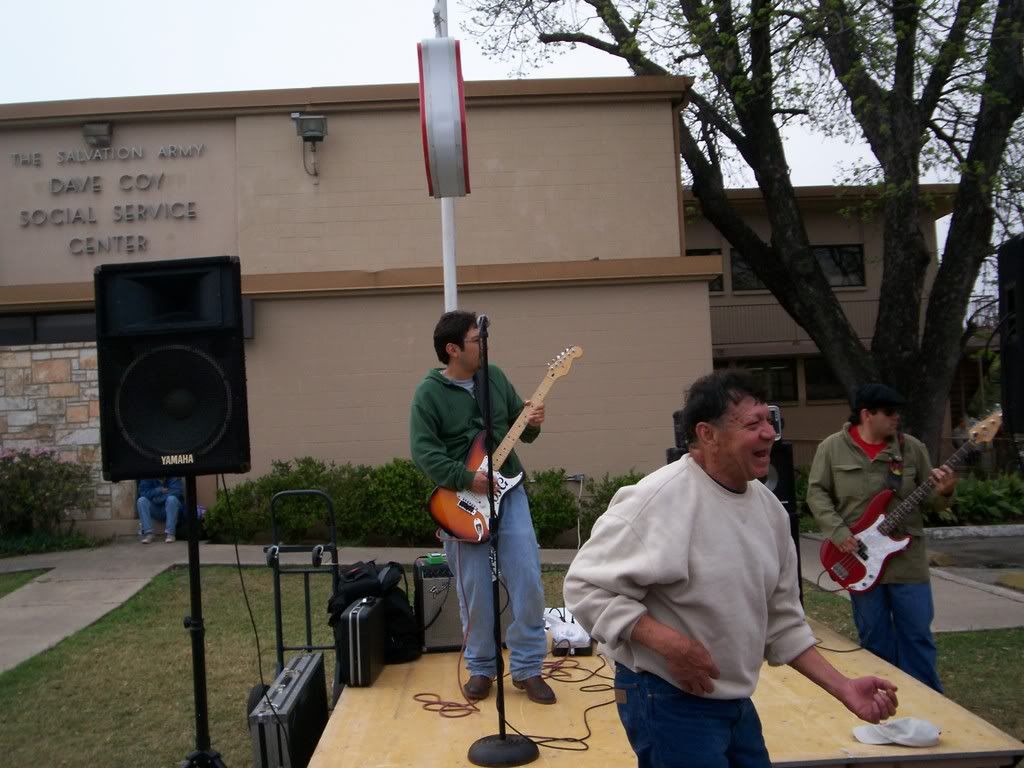 There was also the obligatory “crazy old man” dancing (beige shirt in front). This guy looked like he was having a good time and people had fun watching him. San Antonio may have a “crazy people dancing” syndrome but we rarely have “creepy crazy people dancing”.
There was also the obligatory “crazy old man” dancing (beige shirt in front). This guy looked like he was having a good time and people had fun watching him. San Antonio may have a “crazy people dancing” syndrome but we rarely have “creepy crazy people dancing”.
After four years of participation, I think that there is only one major flaw with the “Race-for-the-Cure…..a lack of bathrooms along the race route. In fact, there are usually only two at a Shell station just past the two-mile mark: Check out that line. The starting/finish area has tons of porta-potties but the above are the only ones along the race route. Considering the walk takes a while, you better hope the downtown businesses are accommodating.
Check out that line. The starting/finish area has tons of porta-potties but the above are the only ones along the race route. Considering the walk takes a while, you better hope the downtown businesses are accommodating.
Next, was an even more pleasantly surprising entertainer. We heard her long before we saw her. From up the street came this “Bette Midler” sized voice singing Aretha Franklin’s “Respect”. All of our ears perked up because she was really belting it out! We were all prepared to be impressed. But when we rounded the corner, she was this tiny, little girl!! *was even more impressed than expected*: The singer is the girl in the green. Several race participants (pink shirts) decided to jump over and start dancing with her. See what I mean about “crazy people dancing”?! It’s like this weird group compulsion.
The singer is the girl in the green. Several race participants (pink shirts) decided to jump over and start dancing with her. See what I mean about “crazy people dancing”?! It’s like this weird group compulsion.
Unfortunately, this singer was followed by the most unpleasant experience of the race for me. There were protesters...With pictures that were extremely NOT appropriate for a family audience. I get that people could have legitimate issues with how the Susan G. Komen Foundation is run. However, there are more appropriate times and places for a protest. The race is about the survivors and the sick, about their families and friends showing their support, not about politics. I took pictures of these assholes but I’ve decided not to post them; they don’t deserve the free publicity.
Even with a slightly bigger group and some health issues, we managed to finish earlier than last year: In fact, this may be my best time yet for the 5K race. Perhaps due to my yoga classes?
In fact, this may be my best time yet for the 5K race. Perhaps due to my yoga classes?
As we walked back to our parking spot, my mother and I spotted some real honest-to-God celebrities (besides some NBA guy and all those newscasters at the beginning of the race). First, we caught Ronald McDonald attempting to flee the scene: This is as close as I was willing to get due to my latent fear of clowns.
This is as close as I was willing to get due to my latent fear of clowns.
Next, was local star, the H-E-Buddy! The race was worth it just for this brush with greatness. ;)
The race was worth it just for this brush with greatness. ;)
All in all, an excellent way to spend a Saturday morning.
Part 2: FOUND HERE – On San Antonio’s downtown buildings.
Monday, March 31, 2008
Race-for-the-Cure 2008
Posted by
Jessica
at
7:29 PM
0
comments
![]()
Labels: cool, culture, san antonio
Sunday, March 30, 2008
CD Baby = Sonic Brilliance!
It all started with a music post over at Sepia Mutiny. After clicking several links, I ended up at music site CD Baby, which is an absolutely fantastic place to discover musicians you didn't know existed. I've spend the last two hours listening to and purchasing music there.
The best (IMHO):
Raghu Dixit's self-titled album - Give tracks 2, 5 and 7 a listen. This is the reason I found the site and was my first purchase.
Children of Agape - A deservedly sold-out album of Zulu tribal music and traditional spirituals. Gorgeous music from an orphanage's children's choir. I'm buying as soon as it's available.
"Blondfire" by My Someday - A wonderful britpop duo. "Oxygen" and "Lovesick" are particularly good tracks. I also bought this one.
"Unearthed" by E.S. Posthumus - Blending electronic, classical and world music, just a fantastic album of good, chilling music. Also purchased today.
"Huria" by Sanna Kurki-Suonio - Finnish folk music! Very sparse arrangements but excellent. I highly recommend the jazzy "Tytto Kulkija" and the very catchy "Matkalla".
(sigh) At the rate I'm going, my entire day will be spent with one ear on this website....
Posted by
Jessica
at
1:30 PM
1 comments
![]()
Friday, March 28, 2008
Patterns, Patterns Everywhere. And Not A Camera To Click.
While visiting with my mother, we wandered into a nearby "Pier 1 Imports".....I hadn't been in one of these stores since I took up collecting pictures of upholstery patterns. I would have been fine except....
OMG!PILLOWS!YAH! *is overwhelmed*
See full post for pictures recording outrageous enthusiasm of the decorative kind....
Previous to my becoming a pattern-photo junkie, "Pier 1 Imports" candles were my great weakness. And initially, that's what my mother and I both focused on. We were sniffing candles, soaps and insense when, in the corner of my eye, I notice gorgeous geometrically-patterned armchair. 
Unfortunately, after digging in my purse, I discovered my camera batteries were dead. In this moment of devastation, I looked around and suddenly saw cushion after cushion covered in eye-catching glory. Surrounded by patterns, I had no means to record them. IT WAS HELL....For 30 seconds until my mother loaned me her camera phone.
So began my decent into picture-clickin' glee. There were cushions....


But my adventures tonight didn't end with upholstery. "Pier One Imports" caters to all types of pattern-junkie...There were boxes.
Handbags.
(I have no idea why this picture is so yellow. The handbag looked much better in person)
Dishes.
A wonderful Asian-style tea set. 
And a moment of self-reflection where I realized I was enjoying this way too much....
But the truest and best discovery from this shopping spree was this strange pile of creatures...
The sales girls had no clue what they were ("Just some stuffed animal")...My theory: *speaks in narrator-voice*
Once upon a time, in the lands surrounding Chernobyl an old grandmother gathered scraps of cloth into a rough sack. She would take the scraps into town where someone would purchase them, for they were pretty scraps and would make someone a fine quilt. On the way to the village market, the grandmother passed an abandoned playground. She noticed a small teddy bear on the ground. When examining it, she realized the bear would be a good addition to her scraps.
After adding it to her bag, she continued on her walk to the market. But once there, something strange occurred. For when she opened the bag, two six-armed creatures slithered out, their embroidered fabric-skins glistening in the pale Russian sunlight. The grandmother ran away in fright and the creatures escaped into the forest where they began breeding an army of radioactive fabric-scrap minions to take over the world. The innocent looking bin in the above picture is clear and incontrovertible proof that these minions are now attempting to infiltrate our society. Caveat Emptor, people!
Overall, I have decided this was the best "Mother-Daughter" shopping trip in recent memory. We had fun. We took pictures. We at called at each other from across the store to "Come look at this!". We damn-well earned those weird looks the sales girls were giving us. MISSION ACCOMPLISHED.
Happy (Almost) Saturday!
Posted by
Jessica
at
9:45 PM
0
comments
![]()
Labels: decoration, yippee
Wednesday, March 26, 2008
Medellin vs. Texas
I know that I rarely speak of legal topics except for when it overlaps with the technological world. My own legal know-how is limited to “Ars Technica” articles and my “Constitutional Law” elective in college. But, the recent US Supreme Court ruling has caught my interest. The case and the resulting ruling involve many issues prominent in the current War on Terror and the increasing concerns about international laws effecting national sovereignty.
The Short, Short Version of what happened:
-Mexican citizen on Texas death row didn't get informed that he could to talk to Mexican consulate during his trial. On appeal, his defense states this renders his death sentence moot.
-Mexico went to International Court, where they said TX had to let the inmate speak to the consulate b/c of some treaty the US signed
-Texas said, "Nope, that treaty's not US law so we don't have to do any such thing."
-President Bush issued executive order saying Texas had to comply with the treaty even if it hadn't been made part of the US Federal legal code
-Texas took it to the courts....
RESULT: The Supreme Court ruled that
(1) This US treaty was not "self-ratifying" (ie - when the US signs the treaty, it becomes US law). The language was too broad to allow it.
(2) The President does not have the authority to override the above nor to command the states to follow international law not made into federal law.
After reading several articles discussing the case, the most eloquent commentary on the first part of the ruling ruling I found was at Volokh Conspiracy where Ilya Somin had this to say:
...most multilateral treaties and other international law materials are produced by highly undemocratic processes in which authoritarian states and unaccountable political elites from democratic states play a dominant role. On average, the legal rules they establish are likely to be inferior to those created by the domestic lawmaking processes of democratic states. Therefore, it is essential that international law not be allowed to override our domestic law unless it has first been "screened" by the same democratic legislative process that the latter goes through. Otherwise, courts will end up enforcing international legal rules that are likely to be systematically inferior to the domestic rules they displace.Full article.
I am a believer that elites are necessary both to lead the masses and to channel their energies more effectively. But, the best elites are those who work with and are ultimately beholden to the public. My key problem with international laws and treaties is that the elites making the decisions rarely involve people in the process. Or if they do, it’s in regard to something trivial like an online poll for naming a baby elephant on Earth Day. Too often, international bureaucrats hand down proclamations from on high without consulting anyone outside of their relatively monolithic political circles. Honestly, do you genuinely believe the US State Department (which negotiates most of the USA's treaties) is in tune with the pulse of the American public? Or they that care what the American people think? They care about what we can be convinced of, sure, but not necessarily what we want.
Therefore, the Supreme Courts ruling on self-ratification most definitely strikes me as sound. If the American public and democratic processes are in concurrence with international treaties, than the law can be ratified and enforced. Now, the opinion does include some mention that a treaty that is explicitly self-ratifying will be accepted as US law. In this case, the treaty wasn't but it could be possible. I'm not entirely happy about how the Supreme Court split that hair. I'd be much happier if we were required to vet treaties through more democratic means than the treaty negotiations process. Vetting would ensure (1) a more clearly delineated process for applying good international law-making to the United States legal code and (2) a democratic check/balance international treaties and agreements to ensure they are of good quality.
The second aspect of the ruling is both pleasing in its result and disappointing to me regarding the President’s actions. While I find him personally quite likable, the President has long since lost me when it comes to domestic counter-terrorism policies. In particular, his broad interpretations of executive powers (however well-meaning they may be) strike me as really dangerous precedents. Congress should have the authority to review treaties and create enforceable laws based on them. If there is not enough political will or public opinion to ratify the treaty or to create laws based on that treaty, then I’m sorry but the President can’t and shouldn’t just write an executive order telling states to ignore that.
President Bush's overly broad view of executive privilege is honestly one of his greatest weaknesses. The stance doesn't have near the justification his advisors think it does. I'm sure a number of government agencies do love and support this interpretation. Instead of convincing Congress (100s of people) that certain unpopular actions are necessary, they only have to convince one person. Which makes it disturbingly easy to get things done. What Mr. Bush and many of his advisors fail to realize is that people are kinda put off by government when its too effective especially when it comes to investigative and prosecution powers. The President's failure to understand that and pick his battles has resulted in many people being put off by his continued requests for less executive oversight. Yes, terrorism is a real problem but it's also not a blanket justification for destroying checks on executive privilege. That the Supreme Court struck down this broad interpretation is encouraging.
Taken together these two aspects of the ruling (limited self-ratification and limit on executive privilege) ensure that the United States can participate in the international legal process while still staying (somewhat) true to its Constitutional roots. The ruling clearly supposes that international law has a valid place in the US legal system while also ensuring checks and balances are maintained. It's a compromise but an effective one.
Recently, there are issues cropping up in Constitutional law that more frequently highlight inconsistencies in our Constitution. That document was created based on the assumptions of 18th century men. For the most part, those assumptions have lasted and remain valid. But with new technologies and more global integration on all levels, some inconsistencies that previously didn’t affect anything are becoming important, even critical to the continued good governance of this country. I can only hope as these issues work through the court system, the Supreme Court’s further rulings in resolving these situations are as well considered as Medellin vs Texas. Link to full post.
Posted by
Jessica
at
6:06 PM
0
comments
![]()
Labels: big thoughts, govt, legal
Monday, March 24, 2008
US Military Music Videos!!
OK, our guys (and girls) in uniform are quite multi-talented. While browsing on LiveJournal, I came across these wonderfully amusing videos they make while lip-syncing. I know I should be cleaning or spending my time off work in a more constructive fashion but....Check them out!
Posted by
Jessica
at
1:10 PM
0
comments
![]()
Labels: cool, defense, entertainment
Sunday, March 23, 2008
Happy Easter!
Greetings from the Houston Area!
I'm spending the holiday with my parents. For Easter Dinner, we had smoked pheasant which I'd never had before. It was excellent!
Also, I've been watching the "John Adams" series on HBO while I'm here. I caught the first two parts last night. Very good television. I highly recommend it. Their portrayal of the Continental Congress' vote to declare independence was absolutely riveting. Not to mention David Morse's version of George Washington is fantastic!
Posted by
Jessica
at
1:18 PM
0
comments
![]()
Labels: food, television, yippee
Wednesday, March 19, 2008
A Great Man Has Departed
At lunch today, I read that Arthur C. Clarke passed away. Even though he had a long life, dying at 90, what a terrible loss! The last living member of “The Three”, he represented a past where many aspects of our modern life were pipe-dreams. Throughout his life worked to promote a future that was both magical and empowering. Ars Technica wrote a truly stirring obituary that’s worth checking out but many others are of course commenting.
I was first introduced to Mr. Clarke at around fourteen when a friend recommended “Rendezvous With Rama” to me. Within a period of about a year I had read "Childhood’s End", "Imperial Earth", "Songs of Distant Earth", and of course, the 2001 books. "Songs of Distant Earth" especially had a profound effect on me. It remains one of the most haunting pieces of fiction I have ever read.
It’s a shame Mr. Clarke didn’t live to see any kind of massive and developed space exploration like what he often wrote about. At least he lived to see communication satellites (an idea he first propounded) become reality and to see space elevators move from “science-fiction” to “possibly possible”. While reading space blogs today, I came across several more news stories that demonstrate how badly we need people like Arthur C. Clarke. These stories point out the incredible good thinkers like Clarke can accomplish by encouraging innovative approaches to “impossible” or "outlandish" problems.
Firstly, scientists have presented a plan for building an ark of genetic and technological information on the Moon. The idea being that after a pandemic, global disaster or asteroid impact, the information is transmitted back down to Earth in order to help people rebuild. It’s an intriguing idea and they already have some ideas of expanding it past the initial stages.
The second item is that someone has created a website specifically requesting aliens to establish communication with Earth! They have essays by some of the world’s leading experts on speaking to ET. One of the most interesting essays is by David Brin, “An Open Letter to Alien Lurkers”. He mentions 12 possible reasons why, if aliens know we're here, they haven't answered. Centauri Dreams continued the discussion in an interesting post called "If the Phone Doesn't Ring, It's Me". Overall, both provide some very thought-provoking commentary regarding why no ET signals have been detected.
The third thing for today I discovered while exploring the second. In order to promote long-term thinking, someone founded the Long Bet Foundation. You publicly make a prediction and if you're correct, you win donated money. It strikes me as an excellent method of channeling humanity's natural urge to gamble into more "big picture" thinking. And when they say long-term, they're really not kidding: "At least one human alive in 2000 will still be alive in 2150." - Bet expires in 2150! From the predictions page is my favorite:
“By the year 2150, over 50% of schools in the USA or Western Europe will require classes in defending against robot attacks.”
Our planet is becoming the world that science fiction dreamed about. Not all the dreams, of course. It's been better than the nightmares and worse than the utopias, but well, that's reality. I wonder who the 21st century's Arthur C. Clarke will be? What will concern him? What projects will he (or she) dedicate themselves to? Perhaps in our super-technological world, we will be overrun by the descendants of Clarke, Asimov and Heinlein. That the type of forward thinking they exemplified will become the norm. I dearly hope I live to see such a world. It would be interesting (in every sense of the word).
Posted by
Jessica
at
6:09 PM
0
comments
![]()
Labels: books, sadness, sci-fi, space probes
Tuesday, March 18, 2008
*Eyes long weekend on the horizon*
From work this week:
1) ATTENTION SUPPLIERS!!!! (specifically plastic injection-molders, metal stampers and powdered metal providers) Sending little gifts such as post-it stationary, calendars and pens is OK. However, if you truly wish to curry the favor of an engineer, please provide cheap but amusing TOYS!!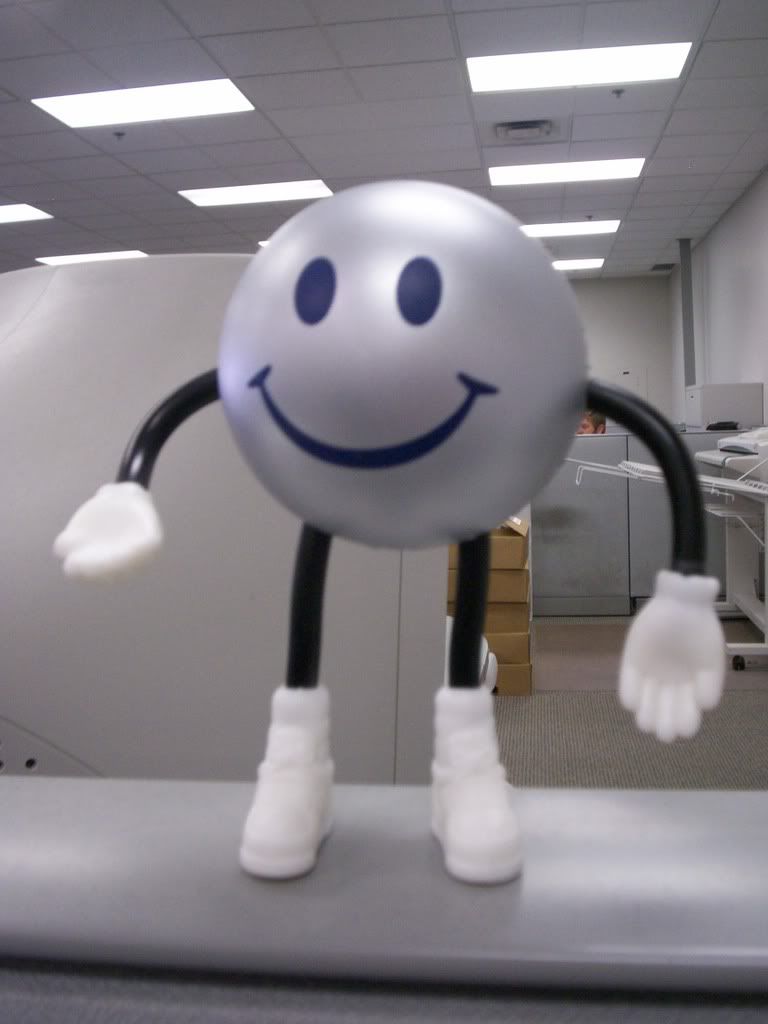 Note the outstretched hand. It's as if Mr. Smiley-Supplier is saying "Show Me The Money." Which is a remarkable likeness of an actual supplier...
Note the outstretched hand. It's as if Mr. Smiley-Supplier is saying "Show Me The Money." Which is a remarkable likeness of an actual supplier...
2) Things my co-workers can accomplish with a box of chocolates and a Darth Vader helmet:
Remember folks at work: (ahem) *cracks whip*
*cracks whip*
Posted by
Jessica
at
6:03 PM
0
comments
![]()
Friday, March 14, 2008
Searching for Silver Linings.....
I really do love my job but today was....terrible. I had plenty of eloquent words earlier but now that I think of them, they're too much like whining. So, it was bad. I'm glad I don't have to go to work for a couple of days. But, I'm choosing to focus on the positive. Here's the good things:
1) Talked to Parents on Phone for like an hour. Note to all: Good daughters do NOT call their mothers one day late to say "Happy Birthday". Even if Mom is forgiving, not cool.
2) Today is PI DAY!!! *does the math geek macarena*
3) Halfway through my super-drama-laden work day, one of my co-workers sends me this picture of a green tea bag label (note the circled kanji character):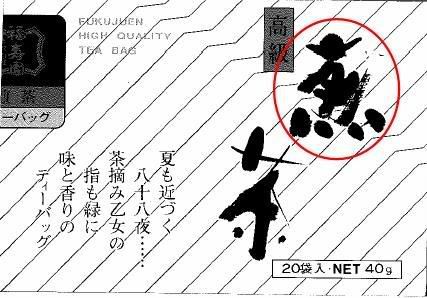
Sense it makes that green tea Yoda likes.
4) In my mailbox is "Stargate: The Ark of Truth". 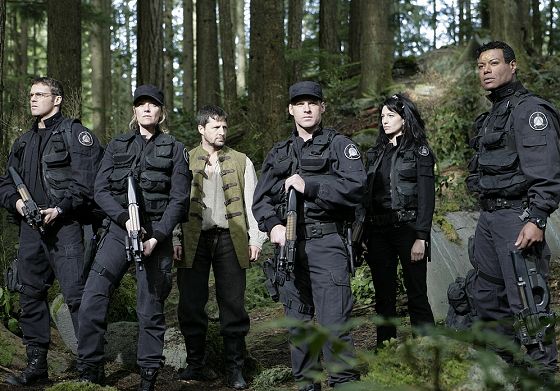
Because Stargate is LOVE, problem-solving, kick-ass people kicking ass and pretty, pretty explosions.
Have a good weekend!
Posted by
Jessica
at
8:22 PM
0
comments
![]()
Labels: funny, mathematics, sadness, stargate, work
Tuesday, March 11, 2008
Seven Deadly Sins – Version 2.0
In these new and wacky times, the Roman Catholic Church has decided to update the 7 Deadly Sins to the 14(!) Deadly Sins. Apparently, creating more pathways to damnation is a real crowd-pleaser.
The Old Sins: Pride, Envy, Gluttony, Lust, Anger, Greed & Sloth
The New “Sins” (with bonus commentary!):
Polluting – While I’m almost positive they mean in a “protect the planet” sense, this could also be seen to represent psychologically polluting (ie – polluting the spirit). Which isn’t that what sin is all about anyway? So, from that perspective are they making the physical manifestation of your sins, a sin? I mean, you’re already being damned for the Gluttony of planetary resources, Lust for (electric) power and Envy of others consumer goods. But, in addition to all that, you're also gonna burn for polluting. Isn’t that kinda like double jeopardy?
Genetic Engineering – You know, I thought that the Church dedicated itself to alleviating human misery. Being born with genetic diseases is NOT a holy occurrence and I don’t believe placing itself on the side of human misery is good for the Church in the long run. Caution is understandable in my opinion; there are most definitely some serious moral issues that need to be addressed about where we draw the line with genetic engineering. But outright banning is just as thoughtless and short-sighted as blind adoption. Once genetic engineering gets to the point where it can save children from inherited diseases and speed up cures for terrible diseases, this “sin” will be irrelevant. I predict this will end up like the Church’s ban on birth control, a part of the doctrine ignored by most practicing Catholics.
Being Obscenely Rich – I await the announcement of the Vatican liquidating all of its holdings. As one of the largest property owners in the world, surely it intends to avoid hypocrisy by removing any possible misinterpretation that it could perhaps, maybe be guilty of this particular sin? *crickets chirping*
Taking/Dealing Drugs – Wouldn’t this be a form of self-pollution? Kinda redundant if you ask me. Not to mention, some recent studies show genetic reasons for why some people become addicted to drugs (versus can take them once, go "not for me" and move on). Since the Vatican bans genetic engineering, if these studies pan out the Church is basically banning people's ability to reduce the likelihood of this type of sin. I get self-discipline is important but that would be carrying it too far, I think.
Abortion – In terms of their target audience, this is probably most inline with modern conservative thought and the one position on this list that the Church has actually investigated enough to have a coherent argument on.
Pedophilia - *Laughs cynically* Something Biblical comes to mind, a phrase...I vaguely recall a dictum about removing wooden beams from eyes...The details are fuzzy.
Causing Social Injustice – What does this even mean? What do they consider social injustices? And does the Church mean intentionally malicious “causing” or unintentional consequences “causing” social injustice? Frankly, one’s a good deal more clear-cut than the other. This "sin" is so general and wishy-washy that it serves absolutely no purpose at all.
My main quarrel with these new sins is that they are too specific. They speak more toward the Roman Catholic Establishment’s fears in the early 21st century than anything else. However, the “Deadly Sins” aren’t supposed to be a product of their times. They are supposed to represent general temptations. These temptations should be applicable in any time and any place and at any level of technology. That’s why the “Seven Deadly Sins” are so often referenced even by non-Christians. They represent truly universal concerns about mankind’s weaknesses. These additions are too much in the here-and-now too have the wider and timeless meaning needed for a "Deadly Sin".
In conclusion: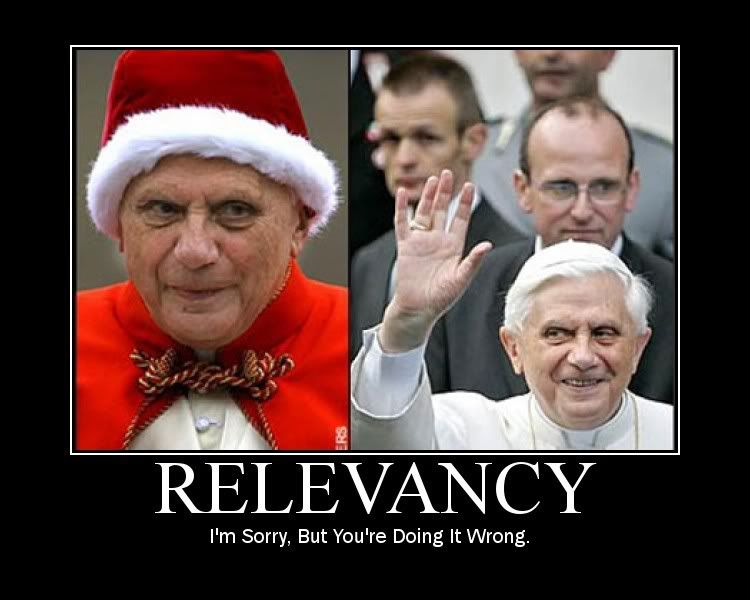
Posted by
Jessica
at
4:55 PM
1 comments
![]()
Labels: religion, what the hell?
Friday, March 7, 2008
Correcting the Gaps – An Unusual POV
During the write-up for my review of Thomas Friedman’s “The World Is Flat”, I had the beginnings of an idea about how the developed world could address the Ambition/Education gaps between our youth and those of the developing world in order to stay competitive in the 21st century. This approach would not involve teaching so much as encouraging participation in the act of flattening by a larger segment of the population.
See full post for summary of the problem, a current social phenomena where people are teaching themselves all sorts of things and why it’s a very good thing.
Amercia’s education system is dated. We have a 20th century system that turns out 20th century caliber employees. Unfortunately, it isn’t the 20th century anymore. And a great many qualities of our education system are preventing us from graduating productive 21st century citizens. This is a huge problem that will take massive effort to correct because America’s education system is also heavily decentralized. For the most part, I would consider the decentralized aspect one of our education systems good points. It allows for experimentation and variety in education much like our federal system allows for the same in government. In addition, part of the problem is generational and cultural. We have a lot of older teachers who think in old ways. And until they change or retire, we’re stuck with a 20th century approach. Colleges have been slightly better at making this transition, mainly because they are more directly beholden to outside forces like employers and alumni. K-12 education, and especially 6-12, is however mired in out-of-date teaching methods, decaying infrastructure and lack of accountability. How we can change these things is unclear and will be a difficult, complicated endeavor. But in the meantime, American students are graduating without competitive skills for a global market. This is the Education Gap.
The Ambition Gap, as described in Friedman’s book, is the fact that American students aren’t as willing as Chinese and Indian to really apply themselves to learning and working hard. While this is partially a byproduct of a poor education system, this problem isn’t limited to students either. Long-time employees stagnate with dated skills and a false sense of entitlement that reduce their value and employability. But in the developing world, there is a real drive for constant self-improvement. This process of learning, unlearning and relearning results in a highly adaptable and versatile workforce. In the flat world Friedman describes, it is this workforce that will succeed. If our education system cannot provide such a workforce for the reasons described above, are there any other parts of our society that can provide this incentive to learn, reinvent and innovate?
I would propose that there is a significant mitigating force within our society (by “our” I include the entire developed world) which can buy us some time before there is a major crisis with our gaps in education and ambition. This will not however make up the generational numbers gap in technical professionals. Again, I don’t propose this is a cure-all but it could help some people until our institutions change.
First, let me begin with some examples:
a) Fic-a-thons & Peer Reviews
Every day, fans of various TV shows, movies and books issue challenges to each other in the form of prompts and fic/icon/vid-a-thons. There is a constant outflow of product from these activities from stories to graphics to videos to hand-crafted goods. Fic-a-thons in particular are interesting because they usually include a time limit as well as other constraints (like word count for a story) which challenge the fan-creators. In addition to these activities, everything is shared and peer-reviewed through comments on websites, linking and proof-reading (known as “beta-ing”) activities. Countless people are willingly exposing themselves to challenges and criticism by participating in these activities. In order to complete these challenges, fans must learn new facts and skills and apply them in an interesting or innovative manner. Success defined as producing something others enjoy and value. Think of it as “open-source” entertainment with some vigorous peer-review.
b) Sweet Charity & Others
A particular form of fic-a-thon or fan activity is the charity drive. This is an interesting twist on the fan-challenge. Here fan-creators put up for bid a product of their work, sometimes a specific format or topic and sometimes to be chosen by the winner. Other fans bid on the work in an auction and the winner “gets” the story/vid/whatever. In this manner, fans have raised tens of thousands of dollars for charities around the country (perhaps more – I’m just referring to the numbers I’m aware of through my own web-browsing). These charitable drives can sometimes bring attention to small, local charities that do not usually attract wide-spread support. For example, “Supernatural” fans have repeatedly raised money for a homeless shelter in Lawrence, Kansas, a town that features prominently in that TV series. Fans who organize these activities are gaining valuable experience coordinating activities across national borders, in various legal environments and with using web applications for publicity, money collection and distribution.
c) The Fans4Writers website & forum
Perhaps one of the most developed and “mature” form of fan activity is activism. Usually this is limited to keeping a show on the air (google “Jericho” and “peanuts”). However, in November of 2007, fans branched out into political activism with their enthusiastic and multi-pronged support of the WGA strike. One the first day of picketing, fans delivered food after gathering funds from international sources. On the second day, they created a food fund. Within a week, they had a website, list of projects, fan-forums (with writers for some shows dropping by). In particular, the fansite “Wheadonesque” should be noted for generating the idea and coordinating with its namesake Joss Whedon to ensure fan activities help the WGA to the most degree possible. In November of 2007, the latent talents of many fandoms in organizing, publicizing and generating content quickly were brought to the forefront and given purpose beyond entertainment. I expect as the flattening of the world progresses we can expect more "cross-over" activity of this nature.
As demonstrated by the above examples, you have a massive global collection of people all learning new skills, supporting one another and constantly engaged in generating productive content, activities and/or self-improvement. While engaging in discussing their fandoms, these people are forced to confront a multitude of opposing viewpoints, study/analyze them and form/defend their own opinions. What amazes me most about fandoms is that so few outsiders realize how much crossover fandom-acquired skills could have in the economic world. The skills developed by the above activities would be useful in any modern career. I would contend that in a flat world, an 18-yr old whose experienced in organizing charitable events, self-tutored in copyright law and capable of teaching themselves various software applications is a better prospective employee than a similar 18-yr old who works at your local McDonald’s.
I think too often when outsiders look at fandoms they see the sex, weirdness and bad grammar but they fail to see all the skills being utilized. Yes, there’s bad grammar but you also have teenagers writing, being exposed to peer review and criticism in a way some of our public schools no longer provide. Yes, there’s sex and weirdness BUT in order to document, share and develop these types of narratives, everyone involved has to learn web applications, publishing programs and graphics software. Not to mention that members of fandoms tend to inform themselves on topics like copyright law, financial law for charity creation/online banking and media-technologies because these are topics directly relevant to their activities.
In addition to helping people self-educate about various issues, participating in fandoms drags the “average” citizen of a country into the flattening world. Just like a multi-national corporation outsources to various countries for its components and services, so do fandoms outsource, in-source and perform all the flattening activities we usually associate with economic entities. A Canadian fanfiction writer with a weblog might have beta-readers in South Korea, Australia and the UK. They might use on their website graphics designed by persons in the US, Japan and Germany. They might be the beta-viewer for fanvidders in India, South Africa and Mexico. This means that a person who participates in online fandoms, whatever their other eccentricities, is directly a part of the flattening phenomena and intimately familiar with it. Again, if it could be translated to the professional world, this familiarity would be a huge asset.
Fandom represents one aspect of American culture that I believe Freidman doesn’t address in his book. One of the reasons for the high numbers of Chinese and Indian graduates is massive institutional support for their governments. And that’s a very good thing for them. BUT, American culture is slightly different in that very often our institutions are not the cutting edge of change. Since we’re such a historically open culture, very often change and self-development occur outside of institutional bounds and guidelines. I believe fandom is a classic aspect of this. It’s an unofficial, barely tolerated activity hundreds of thousands of people participate in but which is transformative, educating and highly optimized for success in a flat world. Some developing countries like China are just now learning about these kinds of activities and they are getting good at them. But, the US (and to some extent Western civilization as a whole) both have socio-political systems already optimized for grass-roots, distributed activities of this type.
As much as our education system needs updating, I don’t think the massive government-sponsored education overhaul outlined by Friedman is the best way to go for the US. It’s too much like trying to play at someone else’s game; a game that frankly China and India are in a better position culturally and politically to win. What America should do instead is learn how to play our type of game better. We should do everything we can to encourage distributed, self-educating, collaborative behaviors in our society. And there are a number of corrective actions which are not directly education-related. Institutional (socio-political) changes could include copyright and patent reform, improving broadband access, and immigration reform for legal technical professionals. Cultural reforms would not be so easy; by their nature, they are more subtle and less centrally determined. But this is where fandom-culture could really pay off. It already has a work ethic, self-improvement ethic, peer-review ethic and friendly competition ethic. And it is constantly innovating, providing those that participate with perhaps an improved ability to absorb, accept and adapt to change.
I do not advocate fandom participation as whole and complete solution. It is one approach in what will need to be a varied tool-box of solutions for adapting to a more global economy. The lack of math/science understanding of the architecture of a flattening world is what I believe the biggest barrier to fandom participation acting as a true mitigating force on the Education gap. Fandoms tend to focus more on skills than outright education. In my experiences, if there is an education focus, it is usually in softer topics like anthropology or languages. Thankfully, there are other forms of open-source education for instruction in math and science. Particular examples include The OpenScience Project and Instructables. Not to mention that more and more universities are following MIT's lead in placing lecture notes and course information online. These sites act as social networks for those who wish to teach themselves more about the technological underpinnings of the modern world. Using the very same skills of fandom (tagging, peer review, requests/prompts, organized activities), people can keep their skills fresh, expand their skills or learn something completely new. What fandom does isn’t provide math/science education. It instead provides its participants with a mindset of learning and innovation which can be easily transferred to more technical but equally distributed social networks.
Fandom culture has its flaws: the specific jargons, the clannish behavior, the inevitable explosions that occur when fans argue. These idiosyncrasies are fully translatable into professional culture. Of course, that translation would have to be carefully navigated. While transition from fan to professional is not uncommon in the entertainment industry, it is unheard of in other fields. I would be quite curious if there are former or current fans that have ever been offered employment based on skills they acquired from fandom participation. I would be especially curious for people outside of the entertainment industry. This would probably be the easiest way to verify my thoughts.
In the absence of an institutional shift to address for gaps in the quality and education of US employees, fandom participation has the potential to make up some of the differences in performance between developed countries and developing countries. In the process, it can imbue large segments of the developed world with a passion and ability to perform the life-long learning necessary for success in an ever-flattening and increasingly competitive world.
Posted by
Jessica
at
6:49 PM
0
comments
![]()
Labels: big thoughts, culture, fandom
Overheard At Work, pt 12
From a discussion about the importance of proofreading emails:
Accountant: “A what?”
Engineer1: “A perusal. It’s a word. ”
Accountant: (pause) “Is that like a walk through Paris?”
Engineer2: “Yes, underground, hence the ‘U’.”
Ah, Fridays....
Posted by
Jessica
at
6:26 PM
0
comments
![]()
Tuesday, March 4, 2008
Online Translators FTW!
While translating some emails at work today, my handy online Japanese-English converter handed out these gems:
“Overseas Branch, All of You” means?
“I can’t be bothered to determine which country I’m actually speaking to”
OR
“Hello distant members of the corporate collective!”
“The Thickness of Meat” means?
A Metal Band from Denmark
OR
A Seat Belt Component Design Feature
"It spread out the palm of one's hand to foreign countries" refers to?
A Missing Excerpt from the Book of Revelations
OR
Instructions to Diversify our Supply Chain
You decide.
Posted by
Jessica
at
6:08 PM
0
comments
![]()
Labels: what the hell?, work
Sunday, March 2, 2008
“The World is Flat” by Thomas Friedman
As I read “The World is Flat”, I was overwhelmed by many conflicting thoughts. Each chapter markedly changed the review post I had begun to mentally compose. Each chapter resulted in a mish-mash of agreement, disagreement and unease. The short version of my review is READ THIS. The slightly longer version is this isn’t an easy book to read for an American especially but it is I think a thought-provoking, well-researched and well-presented book.
Full post has my thoughts on some of the book’s particular points....
I. The Causes of a Flat World and How We’re Not Ready for It
The first part of the book describes Friedman’s own realization that the world was flattening and what the ten causes of the flattening are. The interesting thing about these causes is how many of them are technology related. In fact the only one not technology-related is the first: the fall of the Berlin Wall and the openness that followed. The remaining flatteners include Netscape going public, the open-source movement, outsourcing/Y2K, supply-chaining and [self] informing through search engines. The author points out later in the book that not everyone is aware of this flattening and not everyone is/will be included in it.
He mentions the youth of America in particular by citing three barriers to American success in the 21st century flat world: the Numbers Gap, Ambition Gap and Education Gap. The first is the fact that a large portion of our most educational technical professionals are nearing retirement age and we don’t have enough new, younger professionals to replace them. The last two gaps are noted differences in how Chinese and Indian students look at the world versus how American students look at the world. Friedman refers to this as the “American Idol” problem. The fact that so few American youth seem to be capable of accurate self-assessment. They want the high-end jobs but they want it quick, in a contest or with a reality TV show prize. When combined with American feelings that because we’ve “always” been number one, we always will be, you get a dangerous sense of complacency.
I can definitely agree with these points for the simple reason that I’m a prime example of complacency. A year ago, I had a startling realization: I was in a rut. This is what led to my Personal Enrichment goals and to this weblog. I wish to be clear. A year ago, I possessed a good job I enjoyed, an apartment, a savings account and a retirement plan. By all measurables, I was comfortably middle-class with no worries. What was lacking was the PLAN. I had no personal goals for the next five years, no expectations for self-improvement outside of my work/financial responsibilities. I intend to work my hardest to ensure I don’t let myself fall into a rut like that ever again. The problem is that too few American workers or students realize they are in a rut or that it’s their job to get themselves out of it. And if we are going to compete with the Chinese and Indians successfully and collaboratively, more people need to have the realization I did and more people will need to do something about it.
I do have some contrasting thoughts on why the Ambition/Education gaps at least may not as big of a concern as Friedman supposes but they are beyond the scope of this book review. See This Post for exploration of those thoughts.
II. When Flatness Goes Astray
The remaining parts of the book detail the prospective future of a flattened world and what could threaten that future. From promoting corporate social responsibility to giving countries pause before initiating violent conflicts, the flattened world has a remarkable potential to change our world for the better. And not just change it but create opportunities for huge amounts of the world’s population to have real economic futures. When it comes to reducing poverty and promoting reform, few phenomena in the world today have the possible transformative power as the flattening world.
One point of credit to Mr. Friedman is that for all his hyping and positive outlook on the consequences of a flat world, he doesn’t shirk from the consequences of incomplete flatness, dangers to flatness and problems transitioning to a flat world. From the book:“There is absolutely no guarantee that everyone will use these new technologies, or the triple convergence, for the benefit of themselves, their countries, or humanity. These are just technologies. Using them does not make you modern, smart, moral, wise, fair or decent.”
He discusses several ways flatness could go astray, all valid concerns: Backlash by those left behind in the unflat world, terrorism due to the Muslim world’s inability to adapt, the curse of oil, the environmental problem of another 3 billion people living at Western levels of consumption. These are not small or easily solved problems. The book carefully outlines each one, its causes and possible solutions.
One particular worry he had was that when Americans realize that we are unable to compete in a flat world, we could return to protectionism and permanently hurt our economy and place of prestige in the world. In a flat, interconnected world, protectionism is suicide. Recently, this fear has borne fruit with certain presidential candidates advocating the US abandon NAFTA. They told this to economically beleaguered Ohio. You know, there is a real difference between leadership and pandering. Guess which applies here. In what way does abandoning NAFTA help Ohioans better compete in a flat world? It DOESN’T. It shelters them not just from the effects of international competition but from their ability to assess their value in the global market. By abandoning NAFTA, we would be telling the world that the US is for free trade until it makes us look bad, until it requires we change. We wouldn’t be helping Ohioans or Americans. True leadership would be to help Ohioans compete in a flat, open world. True leadership would be to offer job retraining, education incentives for older students, and initiatives to spur small business development. True leadership would tell Ohioans, “The world has changed and that is scary. But please understand, this change isn’t going to be undone. However, I believe that Ohioans can take control of this change and benefit from it immensely. But we don’t expect you to do it alone. My job is to make this change bearable. To ensure you have the tools to take full advantage of the new opportunities.” Unfortunately, America’s current political class is more likely to pander than lead.
There is also a scathing section on the flaws of the anti-globalization movement or as he refers to it, “Keeping Poor People Poor”. He outlines the constituents of the movement and their flaws. But he also goes to great pains to state that valid criticism of how we globalize is 100% critical:“What the world doesn’t need now is for the anti-globalization movement to go away. We just need it to grow up....You don’t help the world’s poor by dressing up in a turtle outfit and throwing a stone through McDonald’s window. You help them by getting them the tools and institutions to help themselves. It may not be as sexy as protesting against world leaders in the streets of Washington and Genoa, and getting lots of attention on CNN, but it is a lot more important. Just ask any Indian villager.”
On the issue of terrorism and the Bush presidency, Friedman and I have some very different opinions. He appears to have an excellent grasp of the Arab-Muslim mindset that leads to terrorism and ways we can count that mindset through positive developments like promoting Arab-owned businesses and innovation. However, he completely ignores the military aspect of the problem. Indeed, I don’t think he considers there to be a military aspect to the problem.
Please understand, I don’t think bombing countries into submission will fix terrorism. What the military option does is act as a stop-gap, protecting the flat world until the Arab-Muslim world can be reformed. This will take a couple of generations and involve many types of approaches to different aspects of the problem. A terrorist, someone who has spent months or years planning to destroy human life, is not going to reasoned with at an international conference. That person you have to kill or convince. Convincing is unlikely to work but occasionally you give it a shot and the goal is to get better at convincing as time goes on. But first, you’ve got to clear the field of the die-hards. To me, that’s what Iraq and Afghanistan have been about. Using overwhelming force, what the terrorists and their advocates understand, to get those that can stop and think to stop and think. And to kill those that can’t be stopped otherwise. If you first clear the field of the die-hards and scare some into not being die-hards anymore, then perhaps you can get people’s attention long enough to notice there’s elections and parliamentary reform and quit writing off the Muslim world as the one billion person segment of humanity for whom democracy just doesn’t work. Create examples of forcible reform to demonstrate to those passively supporting terrorism that there are other ways to address their grievances. These are the first steps necessary required to get to the wider steps Friedman describes. I agree with most of his proposals but I consider them Anti-terrorism 2.0 not 1.0.
III. Conclusions
All in all, “The World is Flat” is a hugely interesting read. It’s just not a comforting one. Some assumptions about the world are validated and others rendered moot or ridiculous. But I do believe the book describes a real phenomenon that has the potential to greatly improve the world. It remains to be seen whether we will accept and adapt to the full potential of a flat world. In conclusion, here’s a particularly apt quote from Michael Mandelbaum:
“People don’t change when you tell them there is a better option. They change when they conclude that they have no other option.” – quoted in the book
Posted by
Jessica
at
12:12 PM
0
comments
![]()
Labels: book review, culture, economics, govt, technology



